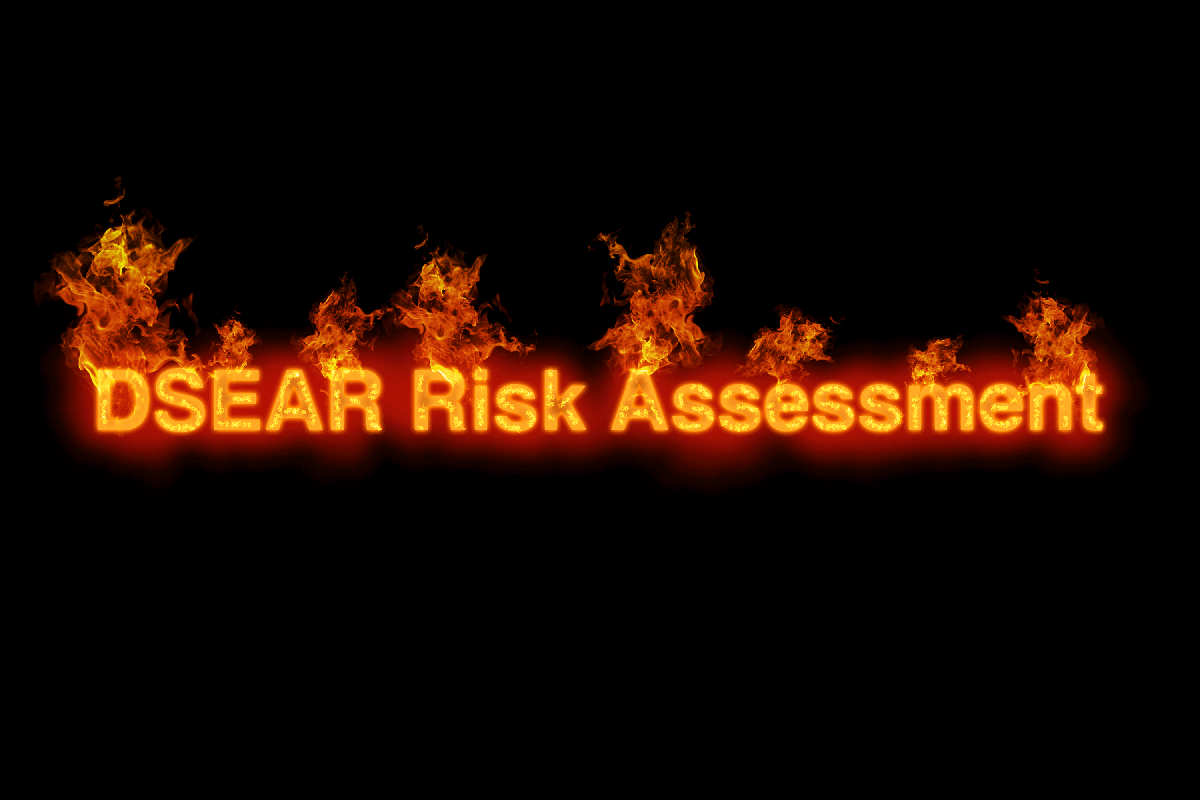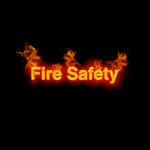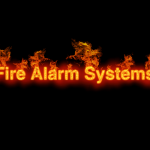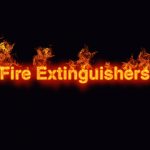Working around hazardous substances and explosive atmospheres can be incredibly unsafe. Still, knowing that they may pose a threat is not enough. Awareness alone cannot prevent a stray spark from lighting a flammable material. You should know about the right preventive measures and be sufficiently equipped to combat any threats your workplace faces. That’s why DSEAR exists.
Our qualified DSEAR health and safety consultants are here to provide the best DSEAR risk assessment for you, ensuring that you gain peace of mind knowing that you are in total compliance when it comes to DSEAR legislation.
Contents
- 1 What Does DSEAR Stand For?
- 2 What Are the DSEAR (Dangerous Substances and Explosive Atmospheres) Regulations?
- 3 What Is a DSEAR Risk Assessment?
- 4 Why Do You Need a DSEAR Risk Assessment?
- 5 What Is Classified as a Dangerous Substance?
- 6 What is a DSEAR Zone?
- 7 Need a Trusted DSEAR Risk Assessment Service?
What Does DSEAR Stand For?
DSEAR stands for Dangerous Substances and Explosive Atmospheres Regulations 2002. It is a law designed to protect people from the risk of fires caused by the corrosion of metal and explosions within the workplace.
A dangerous substance is defined as any substance present at or used at work that may cause harm to individuals as a result of fire. It can be varnish, paint, solvent, flammable gases, dust from sanding and machining, as well as substances corrosive to metal.
Your workplace may contain more risks and dangerous materials that you actually think. However, that’s nothing much to worry about. Part of DSEAR’s purpose is familiarising you with such, making your alert, and helping you deal with such responsibly.
What Are the DSEAR (Dangerous Substances and Explosive Atmospheres) Regulations?
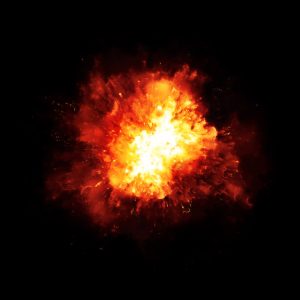 The DSEAR regulations require that all employers to control the risks of explosions, fires, as well as substances corrosive to metals within their workplaces to protect themselves, employees, as well as members of the public. To that effect, employers are required to do the following:
The DSEAR regulations require that all employers to control the risks of explosions, fires, as well as substances corrosive to metals within their workplaces to protect themselves, employees, as well as members of the public. To that effect, employers are required to do the following:
- To carry out a risk assessment to identify the dangerous substances that may be present in the workplace and determine the explosion and fire risks associated with such substances in the context of their intended use.
- To put control measures in place to either remove the aforementioned fire and explosion risks or, if that’s not possible to effectively control them.
- To put controls in place for reducing the effects of any incidents that involve dangerous substances and prepare procedures and plans for dealing with incidents, accidents, and emergencies that involve dangerous substances.
- To identify, classify, and adequately sign the areas of the workplace where explosive atmosphere might occur and make sure that employees are adequately informed about and trained to deal with or control the risks that may arise from the dangerous substances.
What Is a DSEAR Risk Assessment?
A DSEAR Risk Assessment is defined as a risk assessment intended to asses all the risks that fall within the scope of DSEAR as defined above. The risk assessment should include information that shows that the work equipment and workplace will remain safe during normal operation and reasonably foreseeable abnormal operation, which includes maintenance activities and shutdowns.
Why Do You Need a DSEAR Risk Assessment?
Explosions and fires often lead to the creation of harmful physical effects, which include oxygen depletion, over pressure effects, and thermal radiation. Substances corrosive to metal can cause damage to structures that contain metal and this may lead to reduced structural integrity.
Compliance with the DSEAR regulations means assessing the risks that the dangerous substances may pose. Employers are required to identify any dangerous substances in the workplace, work activities that involve such substances, and ways in which both activities and substances may harm workers and members of the public.
What Is Classified as a Dangerous Substance?
A dangerous substance is best defined as any substance that’s present or used at the workplace, which if not properly controlled may cause harm to people as a result of explosion, fire, or corrosion of metal. Dangerous substances are found in just about any workplace and include:
- Chemicals e.g. Cleaning products that are usually unstable and may react violently with other materials under certain conditions.
- Gases e.g. Methane and liquified petroleum gas that are usually stored in pressurised cylinders. If such gases were to escape, the gas may ignite and explode on a catastrophic scale.
- Dangerous Liquids e.g. Cleaning chemicals, adhesives, paints, solvents, and petrol. Such liquids emit flammable vapours that may explode in the air or be set alight.
- Solids e.g. Textiles and Packaging Materials. They can be dangerous if they give off acrid black smoke if exposed to an ignition source since it can be poisonous and thus a danger to people’s safety and health.
- Dusts: They can be produced by work materials and activities e.g. metal powders in factories, animal feed, flour and sugar in the food industry, woodworking, and coal. Clouds of dust raised by such may explode violently when ignited.
You might not be in an industry that involves directly handling dangerous substances, but there will be some around you. Paint is on virtually every wall, cleaning products are in just about any kitchen, while some form of packaging materials or textiles will definitely be present in the vast majority of workplaces. Safe handling and proper storage of such materials is thus imperative.
What is a DSEAR Zone?
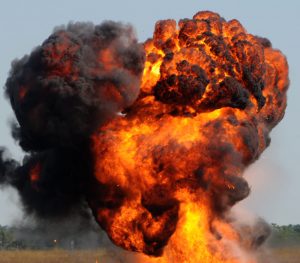 A DSEAR zone is a hazardous area that’s best defined as any place where an explosive atmosphere may occur in quantities such that special precautions are needed to ensure that the safety of workers is protected. The special precautions would be necessary in areas where using certain equipment would be incredibly dangerous.
A DSEAR zone is a hazardous area that’s best defined as any place where an explosive atmosphere may occur in quantities such that special precautions are needed to ensure that the safety of workers is protected. The special precautions would be necessary in areas where using certain equipment would be incredibly dangerous.
The following 3 DSEAR zones cover dangerous gases, mists, and vapours:
- Zone 0: It is an area where an explosive atmosphere that consists of a mixture of air and dangerous substances in the form of mist, vapour, or gas is continuously present or for extended periods of time frequently.
- Zone 1: It is an area where an explosive atmosphere that consists of a mixture of air and dangerous substances in the form of mist, vapour, or gas is likely to occur in normal operation on occasion.
- Zone 2: It is an area where an explosive atmosphere that consists of a mixture of air and dangerous substances in the form of mist, vapour, or gas is unlikely to occur in normal operation but, if it occurs, it is only likely to persist for a brief period of time.
The following 3 DSEAR zones cover areas where hazardous dusts are present:
- Zone 20: It is an area where an explosive atmosphere, which is in the form of a cloud of combustible dust is present for extended periods, continuously present, or frequently present.
- Zone 21: It is an area where an explosive atmosphere, which is in the form of a cloud of combustible dust is likely to occur in regular operation on occasion.
- Zone 22: It is an area where an explosive atmosphere, which is in the form of a cloud of combustible dust is highly unlikely to occur in normal operation, but if it does, it only persists for a limited period.
Once the DSEAR zones have been identified, the employer can properly select and install apparatus that will ensure that the explosive atmosphere is safe for use.
Need a Trusted DSEAR Risk Assessment Service?
Our qualified DSEAR health and safety consultants are here to provide the best DSEAR risk assessment for your company, ensuring that you gain peace of mind knowing that you are in total compliance when it comes to DSEAR legislation.
- We are qualified to carry out your DSEAR risk assessment for you
- We create customised health and safety policies, procedures, and management systems for your business
- We are professionals and can act as your competent person
If you would like to learn more about our DSEAR risk assessment services or even book your own risk assessment, contact us today.

